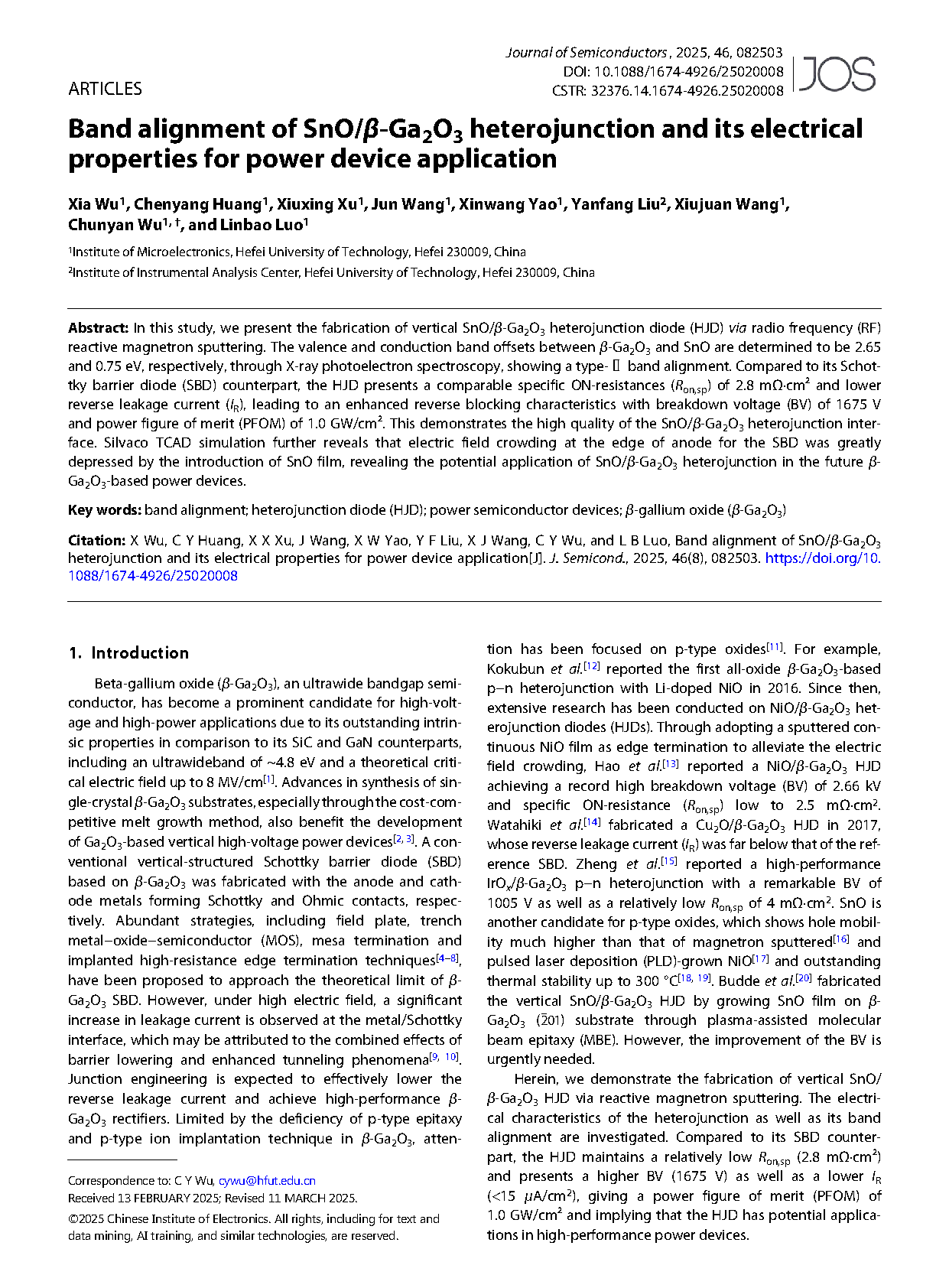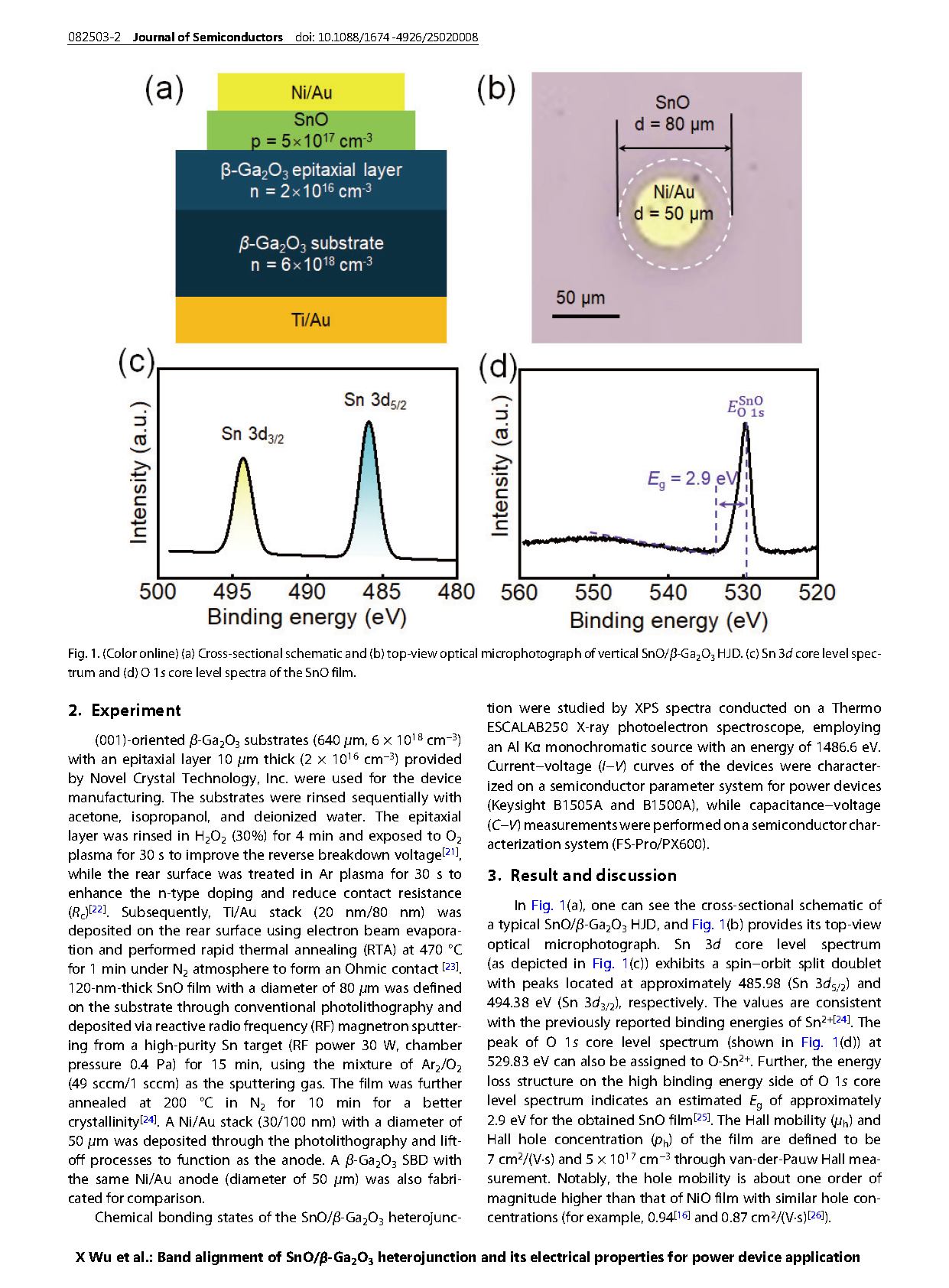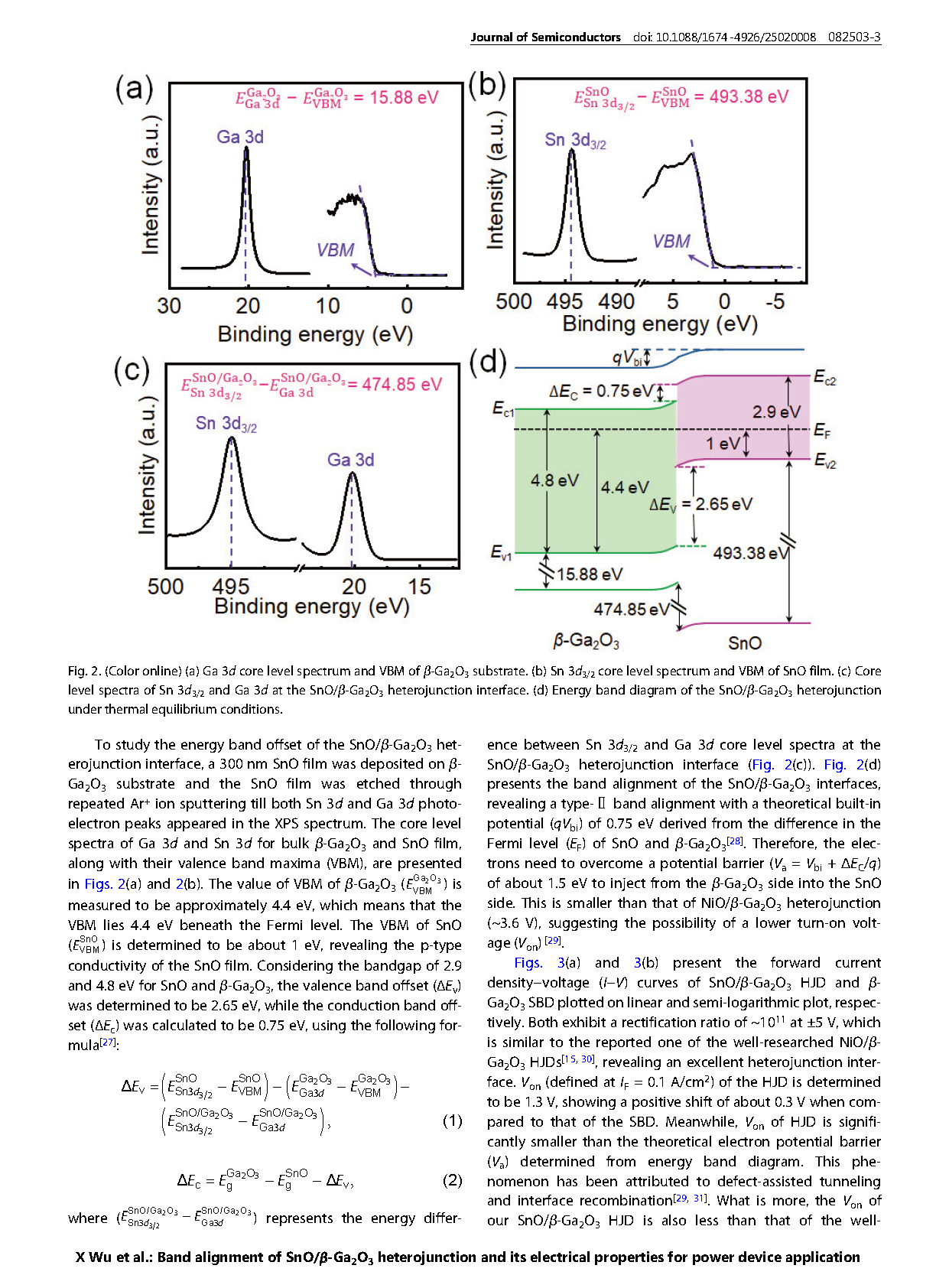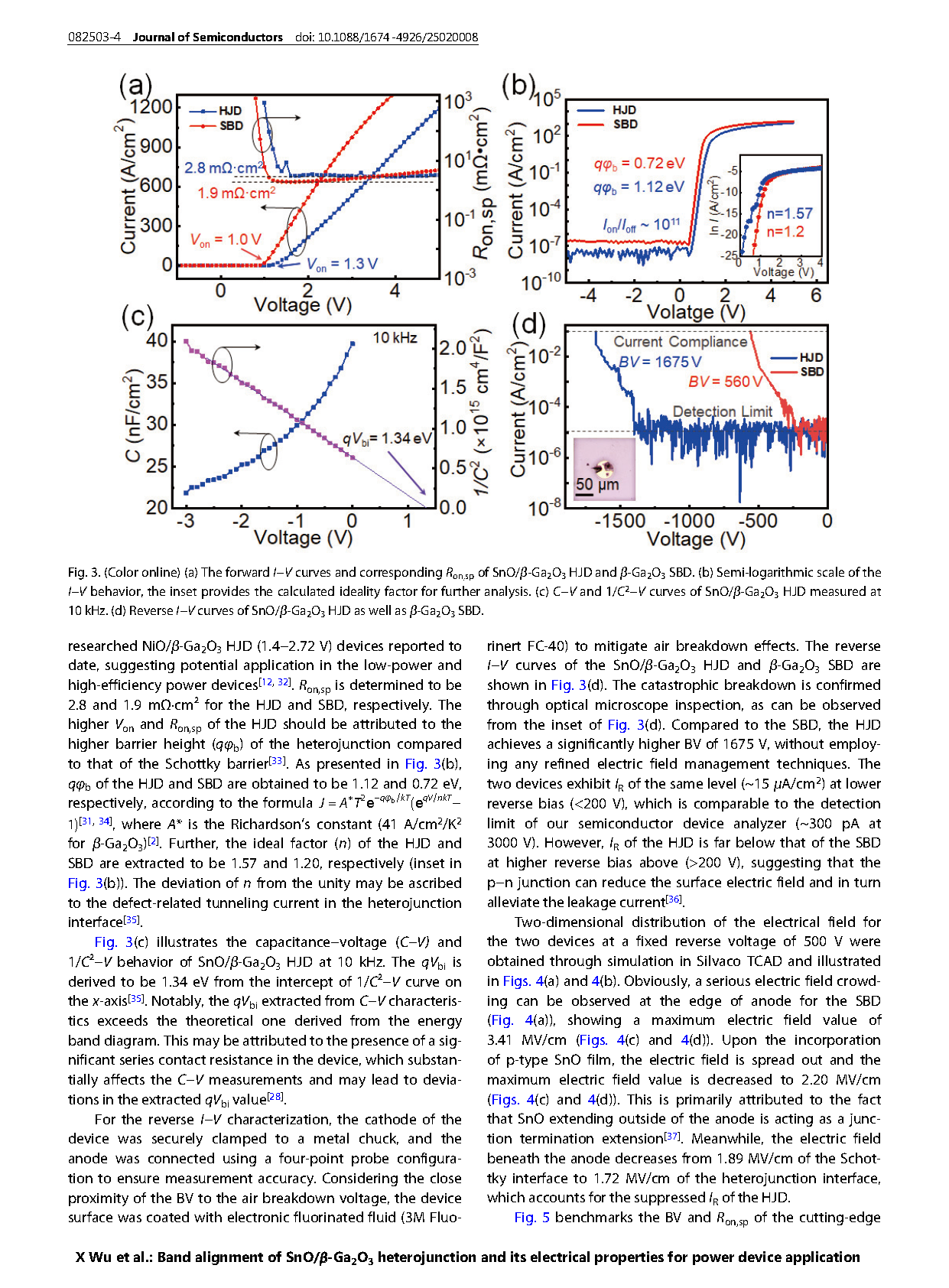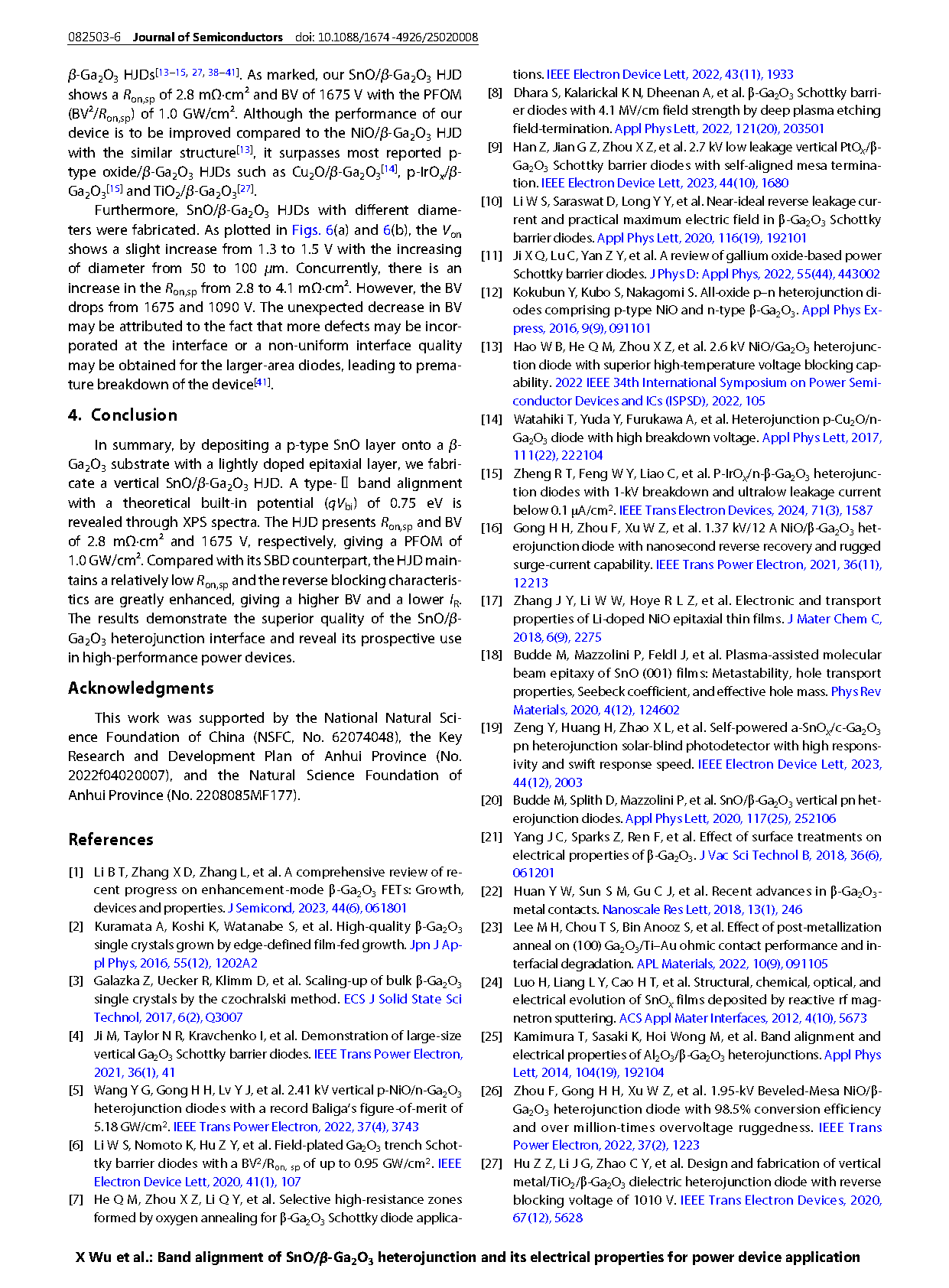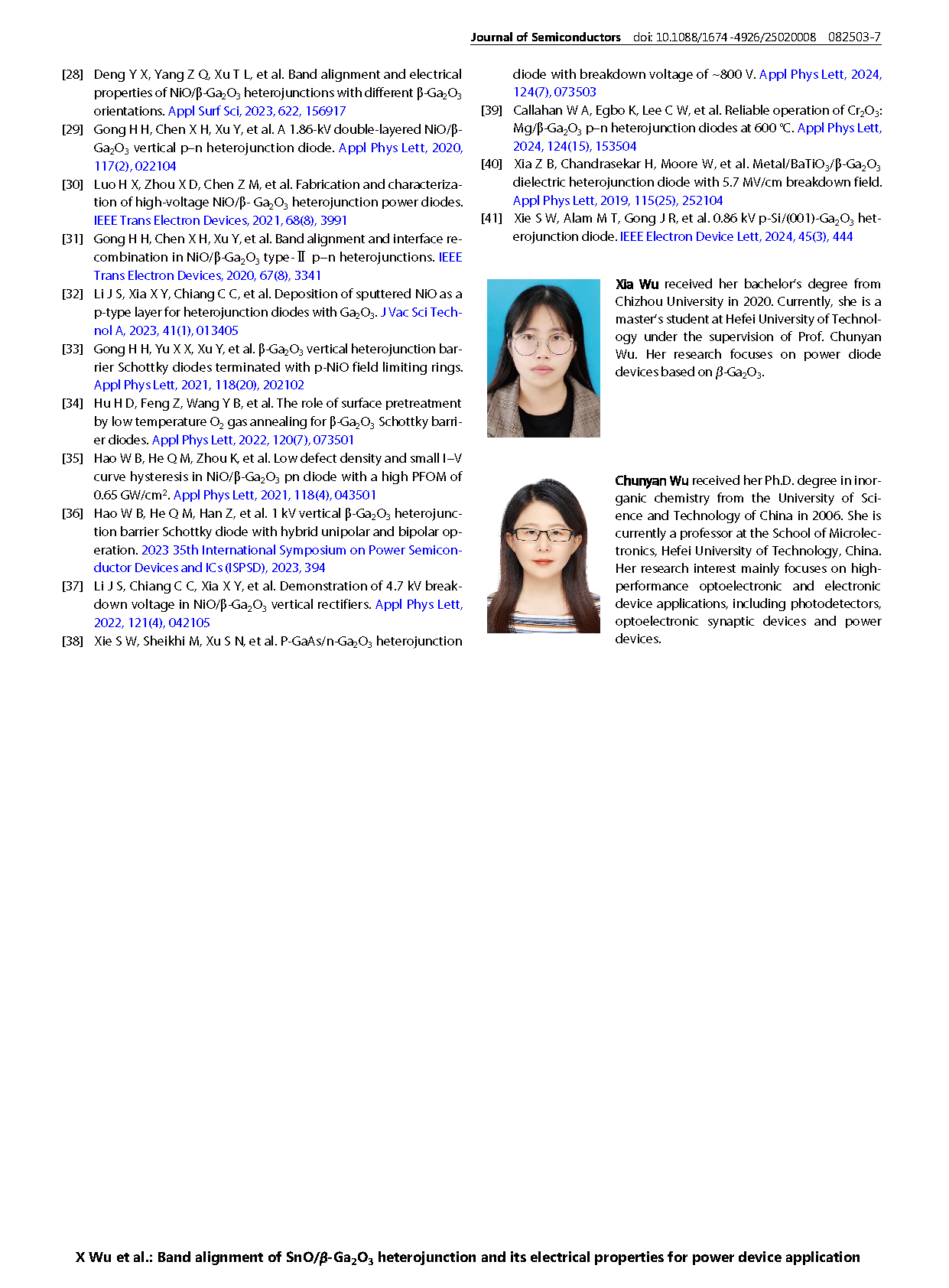
【Domestic Papers】 Band Structure and Device Applications of p-type SnO and n-type β-Ga₂O₃ Heterojunctions
日期:2025-07-30阅读:136
Researchers from the Hefei University of Technology have published two dissertation titled "Band alignment of SnO/β-Ga2O3 heterojunction and its electrical properties for power device application" and "SnO/β-Ga2O3 heterojunction barrier Schottky diodes for depressed reverse leakage current and improved breakdown voltage" in Journal of Semiconductors and Journal of Materials Chemistry C.
Project Support
This work was supported by the National Natural Science Foundation of China (NSFC, No. 62074048), the Key Research and Development Plan of Anhui Province (No. 2022f04020007), and the Natural Science Foundation of Anhui Province (No. 2208085MF177).
Background
Beta-gallium oxide (β-Ga2O3), an ultrawide bandgap semiconductor, has become a prominent candidate for high-voltage and high-power applications due to its outstanding intrinsic properties in comparison to its SiC and GaN counterparts, including an ultrawideband of ~4.8 eV and a theoretical critical electric field up to 8 MV/cm. Advances in synthesis of single-crystal β-Ga2O3 substrates, especially through the cost-competitive melt growth method, also benefit the development of Ga2O3-based vertical high-voltage power devices. A conventional vertical-structured Schottky barrier diode (SBD) based on β-Ga2O3 was fabricated with the anode and cathode metals forming Schottky and Ohmic contacts, respectively. Abundant strategies, including field plate, trench metal−oxide−semiconductor (MOS), mesa termination and implanted high-resistance edge termination techniques, have been proposed to approach the theoretical limit of β-Ga2O3 SBD. However, under high electric field, a significant increase in leakage current is observed at the metal/Schottky interface, which may be attributed to the combined effects of barrier lowering and enhanced tunneling phenomena. Junction engineering is expected to effectively lower the reverse leakage current and achieve high-performance β-Ga2O3 rectifiers. Limited by the deficiency of p-type epitaxy and p-type ion implantation technique in β-Ga2O3, attention has been focused on p-type oxides.
Abstract
In this article, we report a vertical β-Ga2O3 heterojunction barrier Schottky (HJBS) diode fabricated by using reactive magnetron sputtering to selectively grow a circular p-type SnO film array. Compared to its Schottky barrier diode (SBD) counterpart, the HJBS diode shows a slightly increased turn-on voltage (Von) and specific on-resistance (Ron,sp), but its breakdown voltage (BV) is greatly improved due to the decreased electric field crowding effect at the anode edge as well as the lateral surface depletion effect of the SnO/β-Ga2O3 p–n junction. A BV of 1375 V and a Baliga's power figure of merit (PFOM) of 0.37 GW cm−2 achieved for the device with a spacing of 3 μm are expected to be improved by further shrinking the spacing. Meanwhile, the reverse leakage current (JR) is lower than 2 μA cm−2 (the detection limit of the system) even at a reverse bias (VR) of 1250 V. The SnO/β-Ga2O3 HJBS diodes show great promise for use in future β-Ga2O3 power electronic devices with high PFOM, while maintaining a suppressed reverse leakage current.
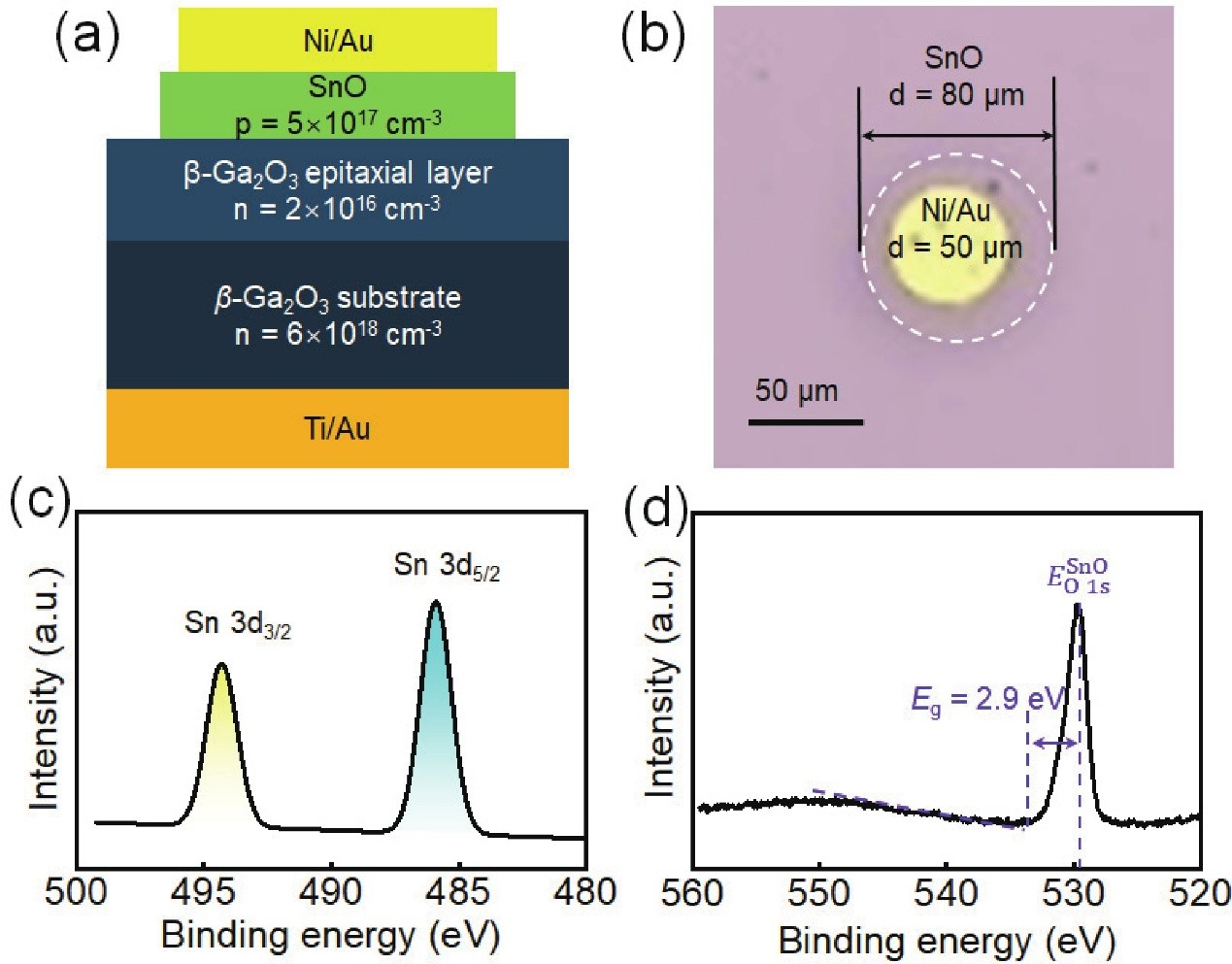
Fig. 1. (Color online) (a) Cross-sectional schematic and (b) top-view optical microphotograph of vertical SnO/β-Ga2O3 HJD. (c) Sn 3d core level spectrum and (d) O 1s core level spectra of the SnO film.
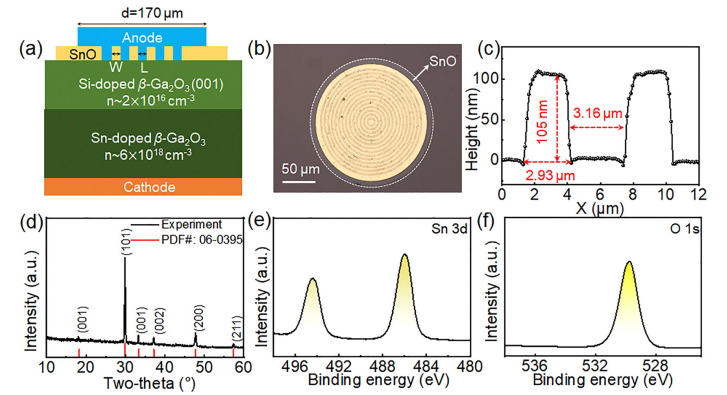
Fig. 2 (a) Cross-sectional schematic and (b) top-view optical microphotograph of a typical vertical β-Ga2O3 JBS diode. (c) Height profile of the circular p-SnO film extracted from (b). (d) XRD pattern of the deposited SnO film. (e) Sn 3d and (f) O 1s core-level XPS spectra of the SnO film.
SnO/β-Ga2O3 heterojunction barrier Schottky diodes for depressed reverse leakage current and improved breakdown voltage
DOI:doi.org/10.1039/d5tc01355k
Band alignment of SnO/β-Ga2O3 heterojunction and its electrical properties for power device application
DOI:doi.org/10.1088/1674-4926/25020008
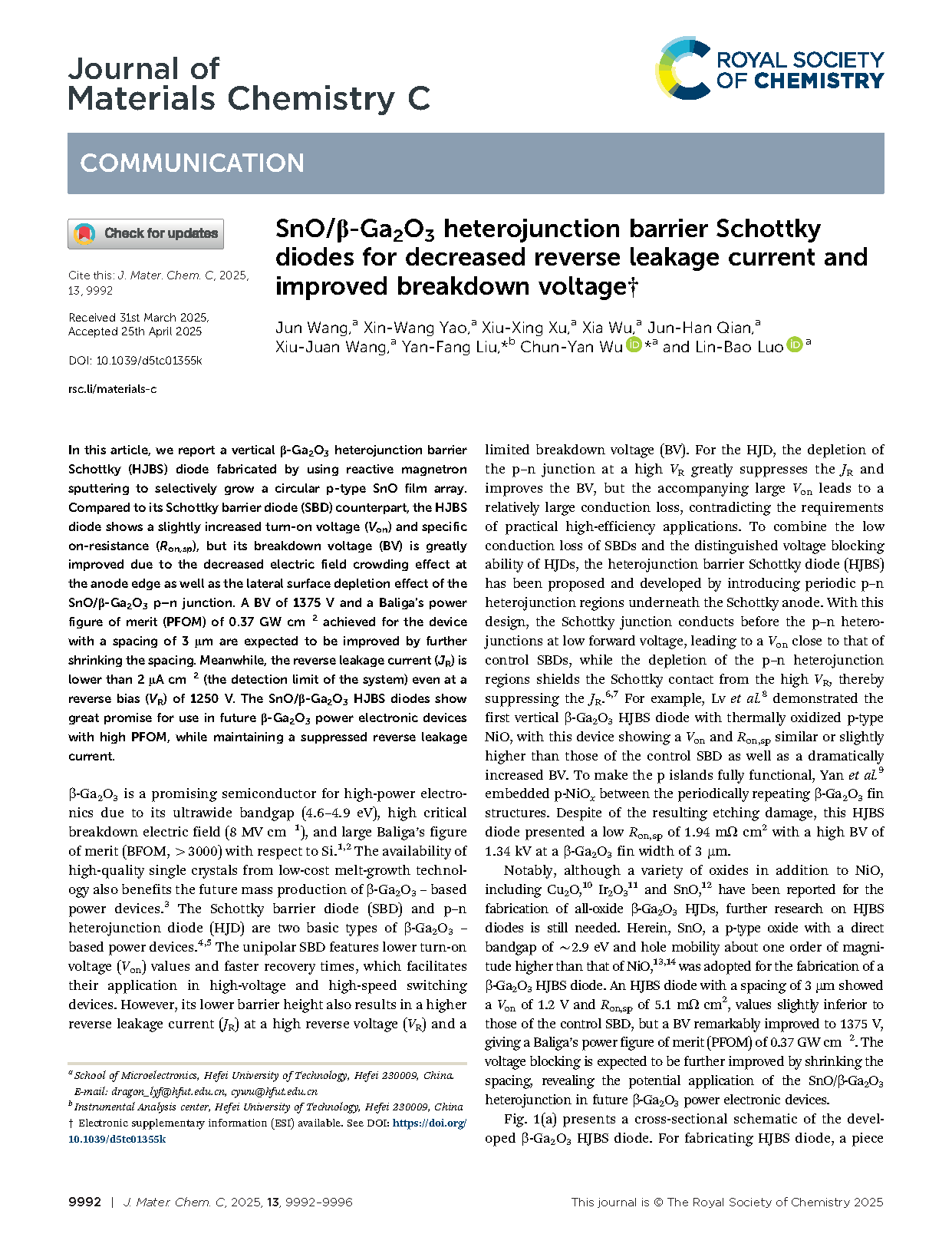
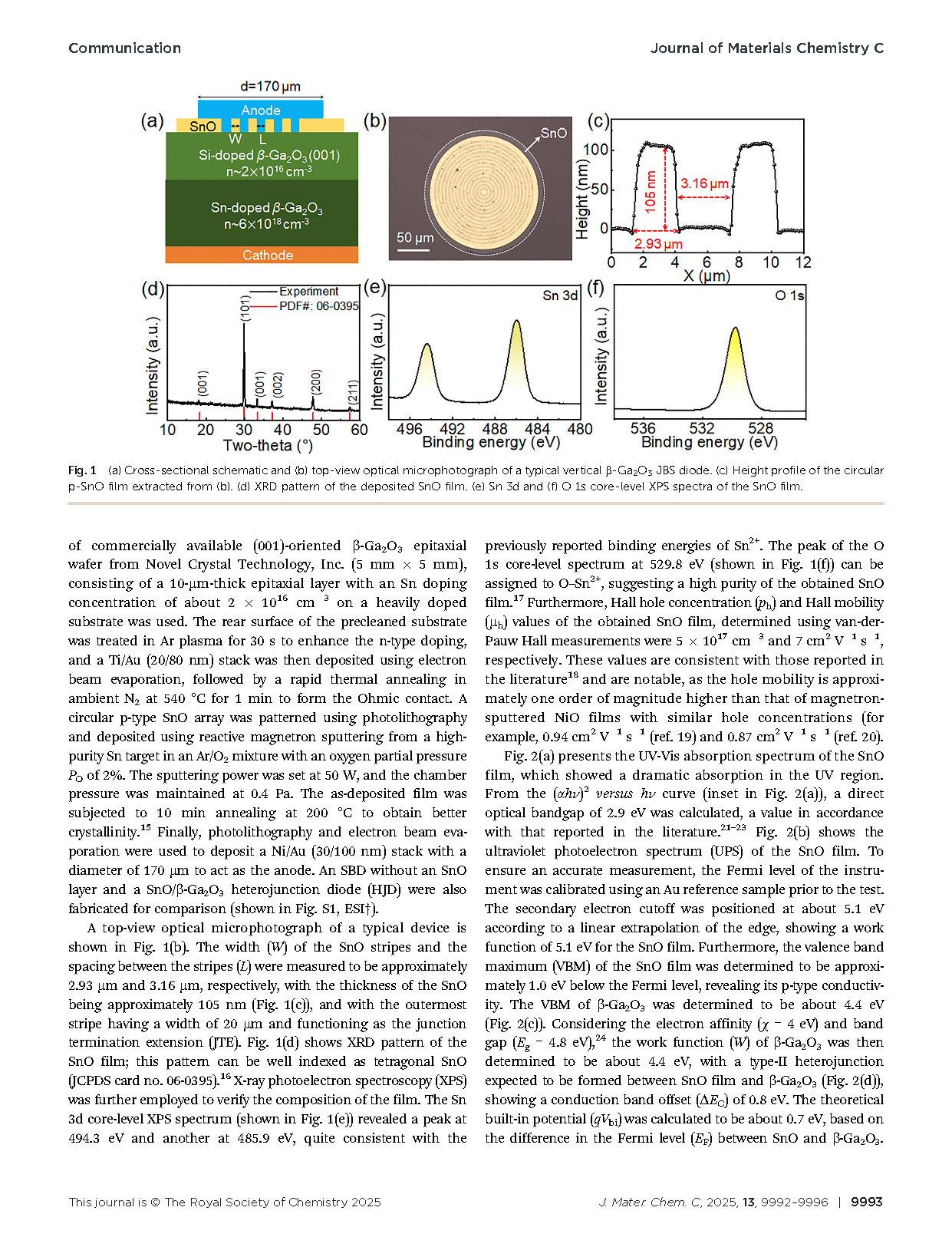
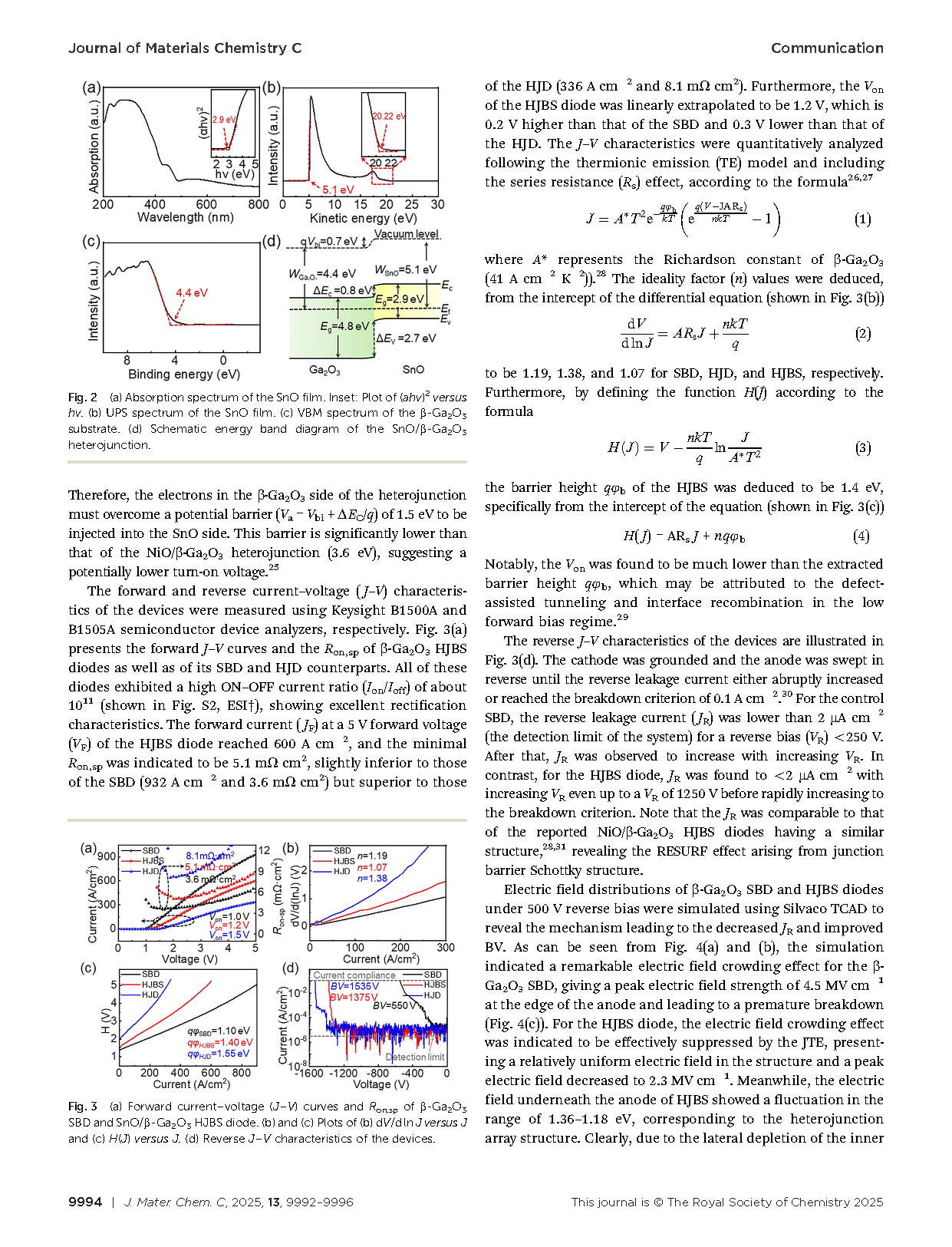
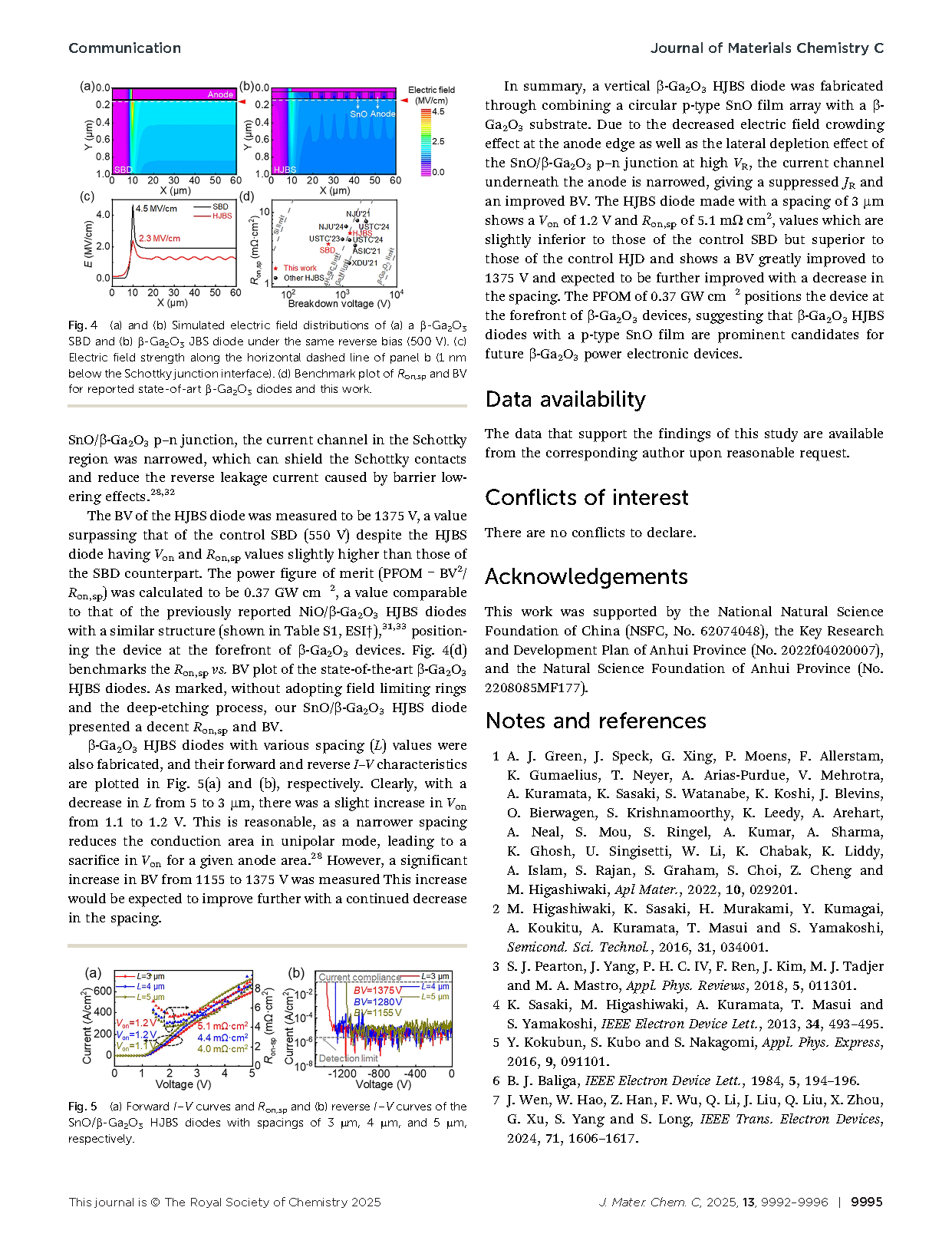
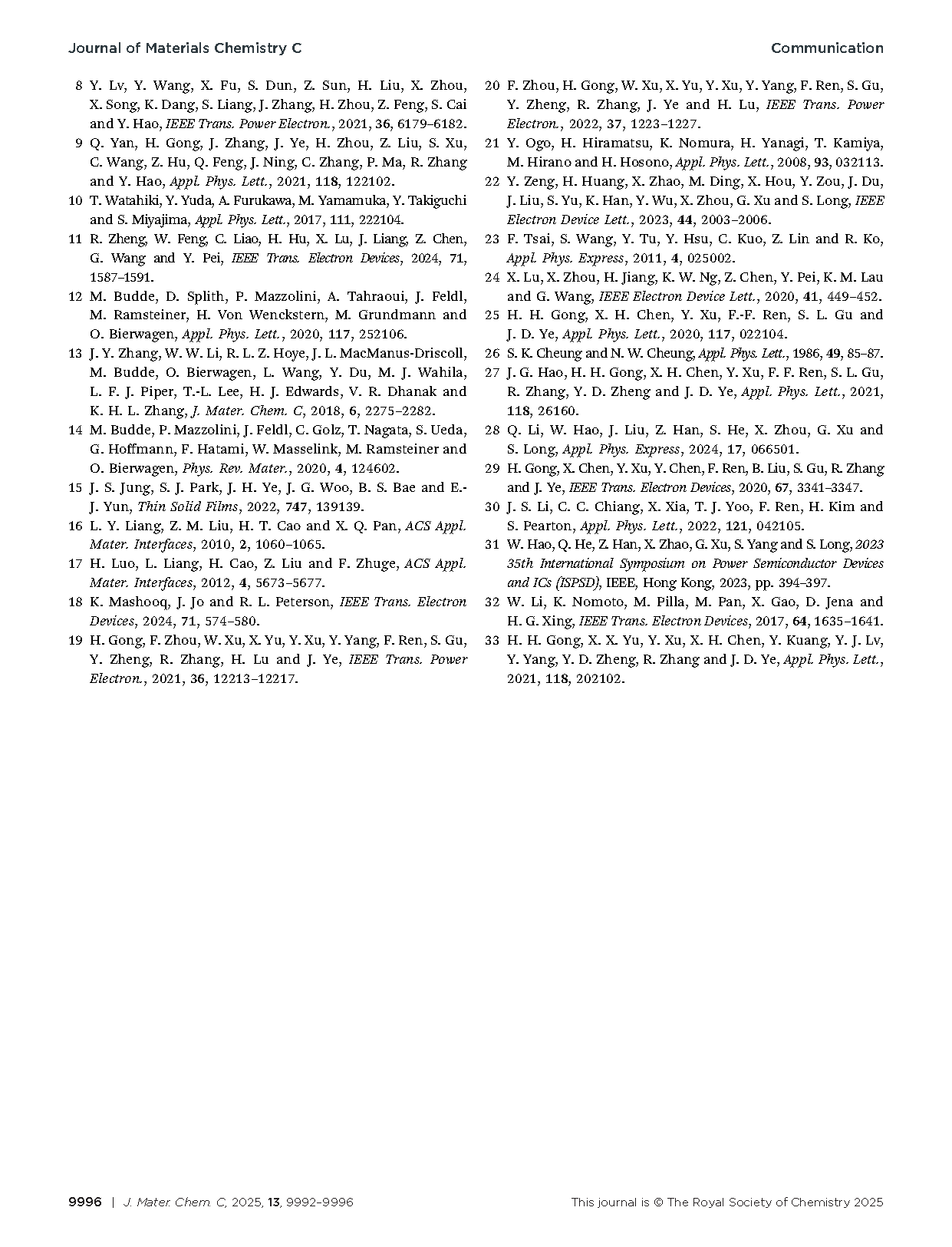
↓
